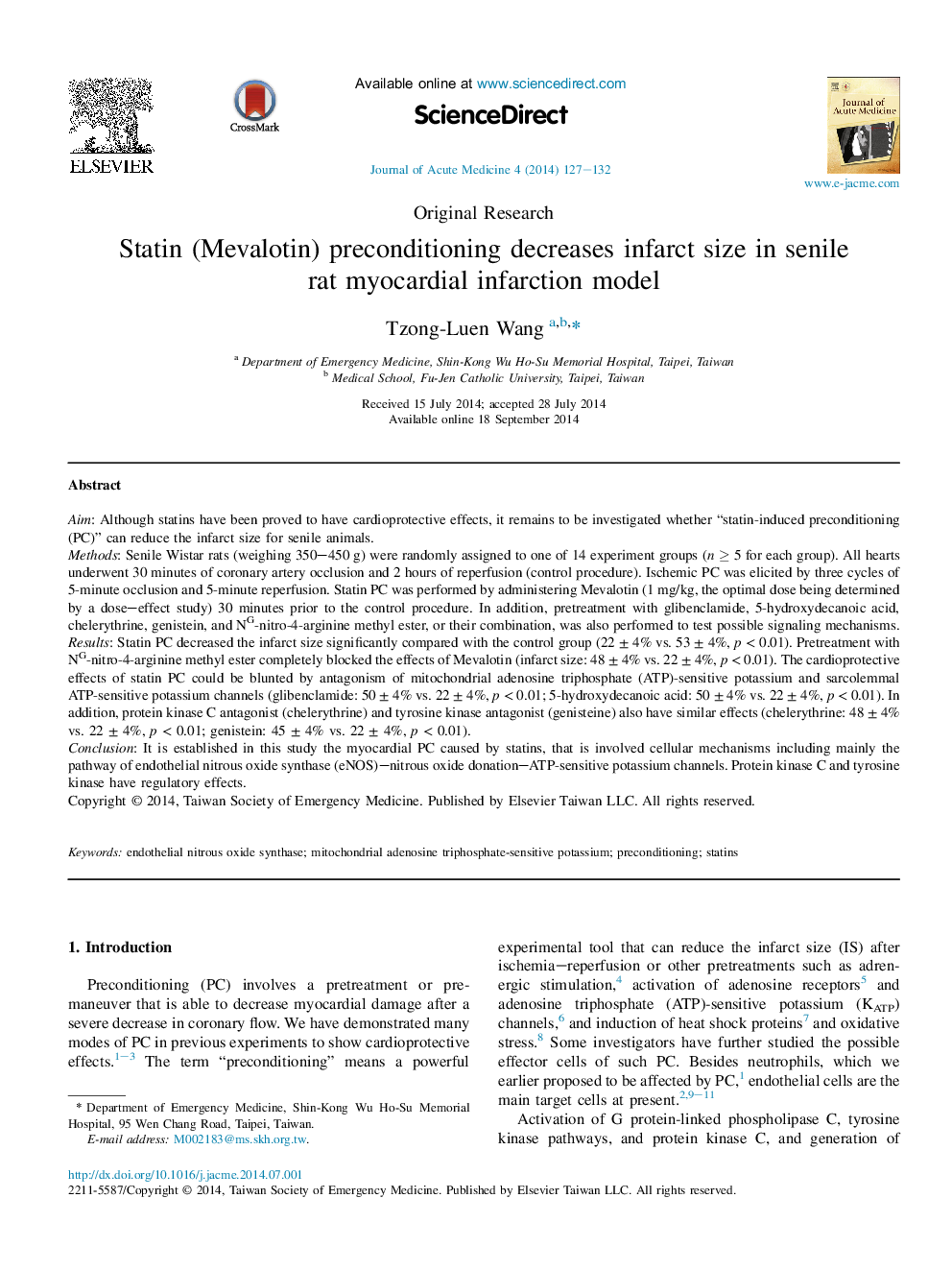| Article ID | Journal | Published Year | Pages | File Type |
|---|---|---|---|---|
| 3244894 | Journal of Acute Medicine | 2014 | 6 Pages |
AimAlthough statins have been proved to have cardioprotective effects, it remains to be investigated whether “statin-induced preconditioning (PC)” can reduce the infarct size for senile animals.MethodsSenile Wistar rats (weighing 350–450 g) were randomly assigned to one of 14 experiment groups (n ≥ 5 for each group). All hearts underwent 30 minutes of coronary artery occlusion and 2 hours of reperfusion (control procedure). Ischemic PC was elicited by three cycles of 5-minute occlusion and 5-minute reperfusion. Statin PC was performed by administering Mevalotin (1 mg/kg, the optimal dose being determined by a dose–effect study) 30 minutes prior to the control procedure. In addition, pretreatment with glibenclamide, 5-hydroxydecanoic acid, chelerythrine, genistein, and NG-nitro-4-arginine methyl ester, or their combination, was also performed to test possible signaling mechanisms.ResultsStatin PC decreased the infarct size significantly compared with the control group (22 ± 4% vs. 53 ± 4%, p < 0.01). Pretreatment with NG-nitro-4-arginine methyl ester completely blocked the effects of Mevalotin (infarct size: 48 ± 4% vs. 22 ± 4%, p < 0.01). The cardioprotective effects of statin PC could be blunted by antagonism of mitochondrial adenosine triphosphate (ATP)-sensitive potassium and sarcolemmal ATP-sensitive potassium channels (glibenclamide: 50 ± 4% vs. 22 ± 4%, p < 0.01; 5-hydroxydecanoic acid: 50 ± 4% vs. 22 ± 4%, p < 0.01). In addition, protein kinase C antagonist (chelerythrine) and tyrosine kinase antagonist (genisteine) also have similar effects (chelerythrine: 48 ± 4% vs. 22 ± 4%, p < 0.01; genistein: 45 ± 4% vs. 22 ± 4%, p < 0.01).ConclusionIt is established in this study the myocardial PC caused by statins, that is involved cellular mechanisms including mainly the pathway of endothelial nitrous oxide synthase (eNOS)–nitrous oxide donation–ATP-sensitive potassium channels. Protein kinase C and tyrosine kinase have regulatory effects.
